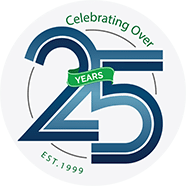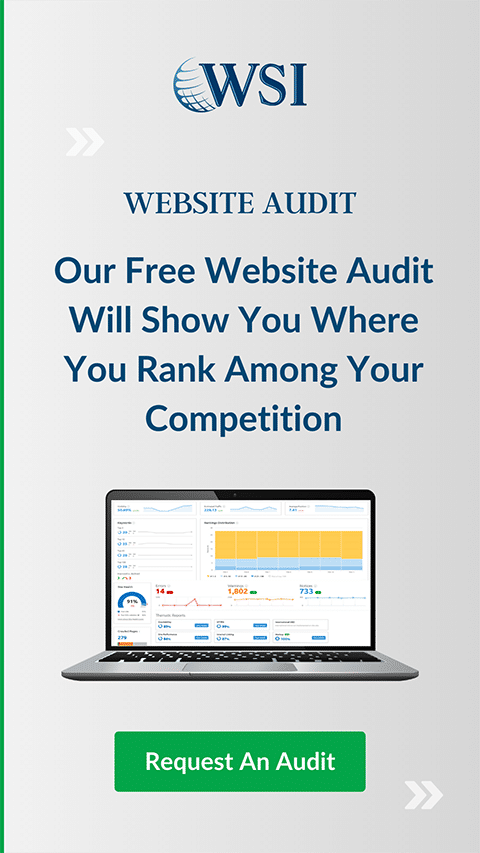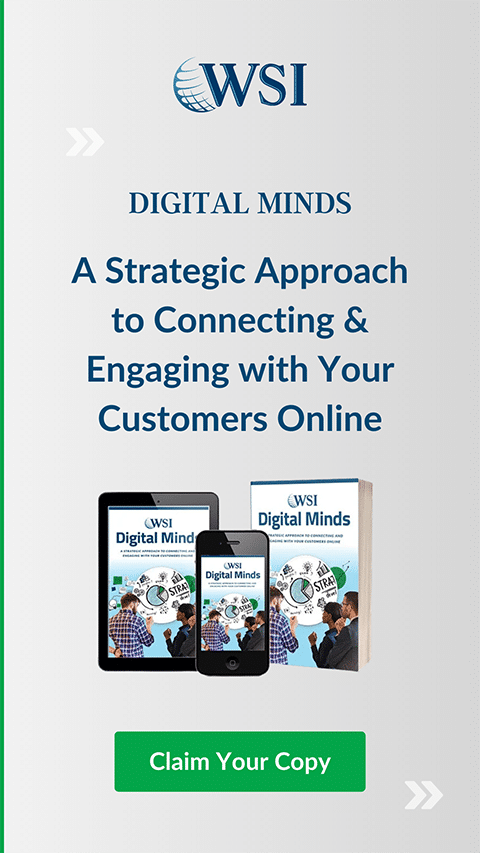
Summary: Optimizing your conversion rate will persuade more visitors to become buyers. Along with a digital marketing strategy, optimization focuses on making it as simple and easy as possible for a potential customer to become a buyer.
In this day and age, having an online presence is more important than ever, especially for businesses. Connecting with your target audience, whether they are clients, potential customers, fanbases, or followers, is vital for a continued and loyal relationship.
Of course, it is always harder to connect with someone over the internet where you can’t carry on a conversation face to face.
To establish credibility and good relations, conversion and digital marketing become key to a successful online presence. Optimizing your website and its functions helps to cement customer satisfaction and loyalty.
What is Conversion?
Conversion has to do with converting a casual viewer into a buyer (or at the very least, an engaged user). When someone is browsing a website for interest’s sake, they do not intend on committing to what the site has to offer. Changing their minds (or “converting” them) is conversion.
Similarly, conversion rate refers to the calculated rate of viewers converted into buyers. For instance, if 100 people view a website’s product page in 24 hours, but only 2 of them buy a product, the conversion rate for that landing page would be 2%.
Visitors to Buyers
When convincing website visitors to convert to buyers, it’s imperative to make it easy for them. Easy conversion comes from simplistic, trustworthy sites with clear goals and access.
For example, an eCommerce shop that makes sense to the visitor and is easy to navigate will get more conversions than a chaotic and confusing shop.
Many customers like to browse first and decide later, so of course, not every visitor will buy something. But those arriving with intent to make a purchase are more than likely to buy something if the website is accessible and helpful.
Visitors will shy away from websites that bombard them with information, are too slow to upload, and are generally difficult to use. Especially in a digital world where everything is so on-the-go, interest is fleeting.
Optimizing your conversion rate will persuade more visitors to become buyers. Along with a digital marketing strategy, optimization focuses on making it as simple and easy as possible for a potential customer to become a buyer.
What is Conversion Rate Optimization?
Conversion Rate Optimization (CRO) is the practice of increasing the percentage of users who perform a desired action on a website. (i.e., clicking links, signing up for a service, filling in forms, clicking “add to cart,” etc.)
CRO involves looking for ways to improve the components on a website that are geared towards converting visitors. Each competent is tested, the data is analyzed, and then changes are implemented in order to achieve desired improvements.
Why Improve?
Over time, conversion rates are likely to decrease. Even at the beginning of a website’s launch, it’s essential to keep an eye on conversions to monitor their rates. The effectiveness of a website will gradually break down, so updates are critical. Improvements increase traffic flow and ease conversions.
The introduction of competitors drives some companies to take a second look at their own websites. With so many more companies turning to digital marketing and online opportunities, it’s important to take notice. Making improvements to maximize conversions increases the chances of remaining competitive and relevant while expanding your business.
Testing for Improvement Opportunities
Running tests to see where your website falls down is a necessary part of maintenance. Routine tests will help keep your website sharp and optimize your conversion.
A/B Tests
A/B testing involves making two nearly identical landing pages to determine which elements need improving. The first page will remain unchanged from the original. The second page will change a single aspect.
If one of the pages works better than the other, there will be a difference in the number of conversions. If there is no change in conversions, the a/b test should carry on with another element.
Multivariate Tests
Multivariate tests work best for sites with more traffic and consistent hits. The process of these tests uses several different variables to test all at once. If a particular combination of the variables works better for conversion, website adjustment will follow that pattern.
Tools for Improvement Opportunities
You can implement tools to understand better the flow of your website and how visitors use it. As opposed to tests, these tools will give a clearer idea of traffic patterns in general, which can sometimes be more helpful than changing a few variables.
General Analytics Tools
General analysis can determine how many visitors your website is receiving per day. These numbers can tell you how popular your site is so that you don’t have to rely specifically on conversion rates to understand how you’re doing.
Heat Map Tools
A heat map shows which parts of your website or landing page visitors use more than others. Essentially it analyzes all the movement on the page, from scrolling to clicking, so you can see for yourself what visitors typically do while browsing your site.
Funnel Tools
Funnel tools help to determine where your visitors depart your website. For instance, if you operate an e-commerce store, many visitors will disappear before they can purchase an item and convert.
Using a funnel tool, you can examine where this happens and discover if visitors are leaving after the first page without even fully browsing or if they give up once they have something in their cart.
Knowing where your visitors give up will let you know where your website has the most issues.
Form Analysis Tools
If you have submission forms on your website, form analysis will help you track information left behind by the users. It’s easier to tell who uses the forms and why and their motivations and general browsing habits with analysis.
Customer Satisfaction Tools (CSAT)
Measuring your customer satisfaction keeps you in touch with your potential clients. If they are satisfied with the services you provide but not the website, you can make changes based on general feedback.
A scale of one to ten provides easy communication and overall customer feeling. More in-depth feedback messages can be advantageous too. If there is a problem you have overlooked, your visitors can tell you immediately.
Conversion Tracking Analysis Tools
Perhaps the most important when you’re looking to monitor conversion, conversion tracking tools determine how many visitors actually convert to buyers on your site. The number of visitors versus the number of conversions determines your conversion rates and tells you how effective your website is.
Identifying Barriers
If your conversion rate is not where you want it to be, you must identify the barriers set in place that prevents conversion. Often these are not purposefully crafted obstacles but rather design flaws or overlooked issues that can deter visitors from staying on your site.
An example of a barrier could be as simple as the lack of search engine optimization (SEO). A website without SEO is more difficult to find because search engines like Google will not rank it amongst websites with higher SEOs. If your client base cannot find your site, they certainly won’t be converting.
Non-Commitment
Barriers can also explain why someone would be hesitant to participate on a website and supply a conversion. When someone in need looks at a service provider but does not commit, something about the presentation is usually the cause for non-commitment. The reason could be as simple as an unclear product description, resulting in a lack of trust.
Identifying barriers and removing them will increase the trustworthiness of your site and make it easier for a visitor to commit to a conversion. Ideally, CRO eliminates any reason for lack of commitment and reassures visitors of a beneficial experience.
Identifying Hooks
Aspects of a website that hook visitors and keep them coming back are essential to any business plan. Knowing these aspects is integral to improving CRO and marketing optimization.
Although it’s important to understand deterrents and barriers that a visitor might experience, hooks are just as vital. Understanding what people love about your website and what they appreciate about the experience are all things that need to be kept and cultivated.
If you are trying to improve your customer’s experience, you must understand both the pros and cons of your website so you don’t end up starting from scratch. Use the aspects that worked previously, but use them even more to give a sense of simplicity and familiarity to a new design or product.
Improvement Strategies
Streamlining your website to maximum effectiveness will increase the likelihood of conversion. If you are in charge of an online store, for example, designing your website to make it easier for visitors to buy your product will increase the chance of a higher conversion rate.
A simple rebranding of the website can lead to higher conversion numbers. A new, more effective design for your website can do wonders and can be as simple as moving a banner or changing the background wallpaper. But sometimes more complicated methods are called for.
Knowing Your Consumer
Knowing your target audience and what they expect from a website allows for a better approach to website design. You can tailor the site to make it easier for visitors to navigate. If you run a website store, you can make it easy for a consumer to find sales, your most popular product, and the checkout.
Improving Load Speed
How fast your website loads can do wonders for customer loyalty. If your website is slow to come up, it will be passed over for a faster one. If a first-time viewer visits your site and it does not load, the chances of them trying your site a second time are low when there are so many more fast-loading websites available.
Introducing Focus on Landing Pages
A landing or destination page needs to be specific and clear to convert a consumer. Decluttering landing pages and increasing the number of pages used will allow consumers to ingest information at a comfortable rate. This streamlining effect makes visitation easier and more straightforward, increasing the chance of a conversion.
Longer Landing Pages
Google ranks longer landing pages as more important than shorter ones. If you have a more extended landing page, the chance that Google will select it to answer a query over other websites increases.
To counteract a cluttered site on an extended landing page, the use of call-to-action buttons and links can help lengthen the page while diminishing other buttons or wordy content.
Lead Flows
The majority of visitors to any website will browse and leave without a trace. Lead flows are techniques to engage a visitor immediately and lead them down a path towards easy conversion.
Pop-up forms frequently work well because they can ask many quick, simple questions that provide information for your analytics. These forms are the easiest way to make conversions because a visitor does not have to commit to much, or anything, while still accessing the website.
Average Conversion Rates
Average rates are about 2% to 5%. However, depending on your field and your marketing optimization, it is possible to increase a low percentage by a large margin. Average conversion rates for highly successful marketing are usually found to be around 14 percent.
What’s the Difference?
The kind of website you mean to market can affect conversion rates. eCommerce sites traditionally have the lowest rates of about two to four percent. On the other side of the scale, finance sites can achieve as high as 24 percent conversion.
High conversion rates do not always mean high profit and vice versa. But conversion remains an important tool, as it communicates viewer participation and how effective your website is.
Conclusion
There are plenty of techniques to increase marketing optimization and conversion rate optimization. In this digital age, an online presence is more necessary than ever.
When implementing improvements, remember to ask your visitors for their feedback to keep open and honest relations. Test different variables, improve hooks, and reduce the barriers that prevent viewers from handing you their hard-earned dollars.
If you’re struggling to optimize your conversion rate and want to hire an expert team to help, contact us ASAP, we’d love to chat about CRO!
Don't stop the learning now!
Here are some other blog posts you may be interested in.
VIEW ALL BLOG POSTS-
The Power of Conversion Rate Optimization
In this day and age, having an online presence is more important than ever, especially for businesses. Connecting with your target audience, whether they are …
READ MORE









